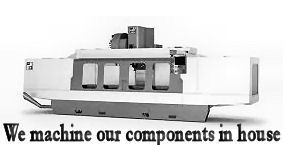Dont quote me on this, but intuition tells me that the VTEC system and the DOHC engines that have the variable valve timing, will do something to "phase" the cams - one exhaust and one intake.
This is simliar to the idea here, with the exception that not only could we alter the lobe centerlines, but we could also make adjustments to the lift and thus duration as well.
The two may be alike, but I know 0% about the specifics VTECH, so if this appears that I'm copying them, then it is by mere coincidence only, for I have had this idea for a long time, but never knew anyone who might could make it come to life.
MC to answer your questions:
I have heard and done some primitive research on the Rhodes lifters. But where we differ is in the field of adjustability and reliability. With Rhodes I would be interested to hear from some long term test, to see what they will hold up to. After 10,000 miles, after 20,000 or 50,000 and some dirt, what happens?
I would like to use Rhodes, so don’t take it that I’m slamming them. But I would like to learn more.
With regard to the construction of the pressure hoses….my first thought would be for rigid and smooth bend hoses. But then Vibration? Ok so lets go with hydraulic lines, Northern Hydraulics – I think they are now known as Northern Tool and Equip. – Has lengths of 14” to whatever length. Their lines are rated for upwards of 10,000 psi and 20,000 psi. Granted we’ll probably not see these pressures, so perhaps some easier to manage Stainless steel lines would be preferred. And then an idea of a “Fuel Rail Like” design… with a rigid body, and only 1 hose per rail, would be the least moving parts, perhaps least susceptible to vibration. And then finally the options to eliminate vibration are to created whatever network of hoses or rails you want, and then make a tray of epoxy that would hold everything in place, much like electronics.
The options are many, which one suits us best is yet to be determined.
Why run a Camshaft….. A really good thought not to run one, but the reliability of timing becomes and issue, and then the “what if” this breaks approach comes in. With a cam and adjustable lifters you would at least have a fall back, to where if the lifters went to Zero pressure, the cam would take over – albeit not as well – but it would still cycle the valves. And then the timing of the valves, keeping them all in unison would become an issue if we were relying on pressure to actuate them 36 times a second @ 3000 rpm.
And then with regard to a pump…Power steering pumps develop some high pressures, and they are belt driven. So perhaps another belt routing idea looped around another pulley that would be the auxiliary oil pump. - I really don’t know, but that’s still in the brainstorming section –
My apologizes for the length,
But I am eager to hear responses, thoughts, and critiques.
Mike




 Reply With Quote
Reply With Quote
